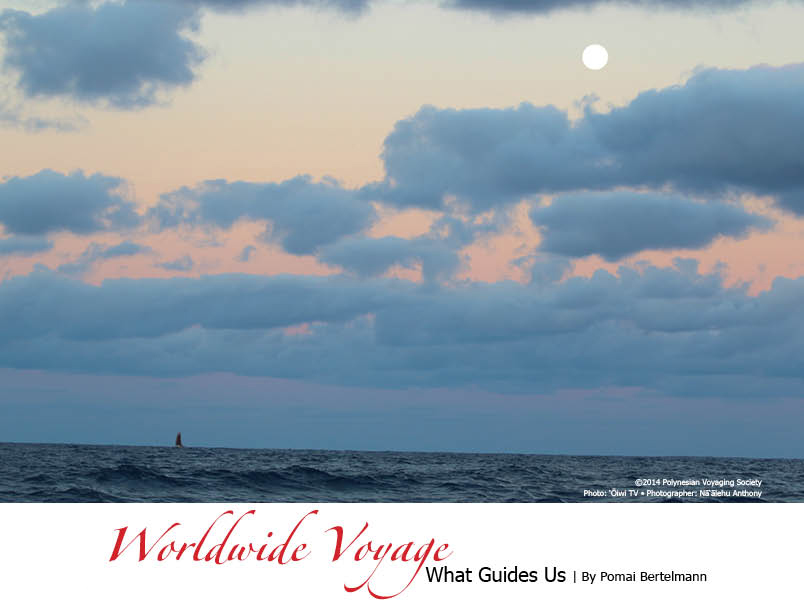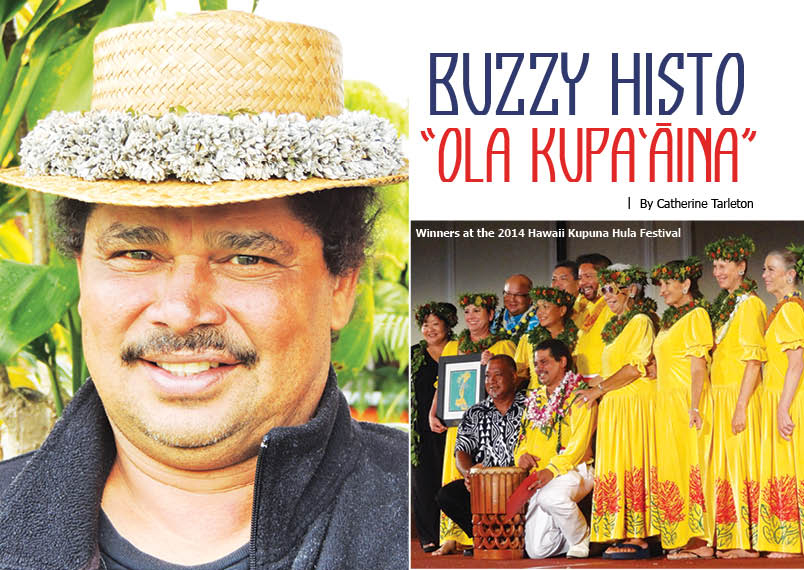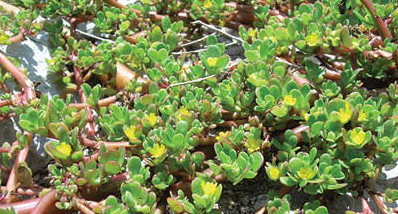
Heavenly Strength: The Inn at Kulaniapia Falls

By Mālielani Larish
When Jane and Lenny Sutton first explored their property, they experienced the same awe that guests feel upon arriving at The Inn at Kulaniapia Falls. Peering over dense jungle, the Suttons spied a glimmer of a waterfall in the distance. After carving a path to the riverside with a machete, they encountered 120-foot-tall Kulaniapia Falls for the first time, standing transfixed by its beauty and power. The waterfall continues to enchant guests from around the world who stay at the Sutton’s bed-and-breakfast on the ridge overlooking the falls.
“We decided almost immediately that we were going to make it into a B&B,” Lenny recalls. “It seemed appropriate because the property is so beautiful we didn’t want to make it private.”
Prior to arriving on Hawai‘i Island, the Suttons lived in the U.S. Virgin Islands, where Lenny worked as a charter boat captain. After Hurricane Hugo devastated the Virgin Islands in 1989, the Suttons decided that they needed a major life shift. Lenny spotted a small line ad in the Hawaii Tribune-Herald that was mailed to them that read “22 acres, close to Hilo, mac nuts, waterfall.” The Suttons purchased the property sight unseen.
Several months later, the Suttons landed in Hilo and experienced the location for the first time. Although the land had zero infrastructure and an abundance of weeds, the Suttons were delighted by the scope and magnitude of the water features on site.
“When we first saw the property we were overwhelmed…we thought that we were on the wrong property,” Lenny says.
After three years of clearing brush, planting the landscape, designing and building the first guesthouse, and equipping the property with water and power, the Suttons hosted their first guests at The Inn at Kulaniapia Falls in 1997.
Jane takes care of the paperwork, billing, and legal requirements, and makes sure that the employees have what they need to do an outstanding job.
The first guesthouse that Lenny built, The Residence, features four upstairs guest rooms with private balconies and baths finished in Italian marble. The shimmering curly koa floors in this guesthouse are befitting a queen, so it makes sense that each guest room bears the name of Hawaiian royalty. Inspired by Burmese architecture, The Residence’s double roof helps to maintain a cool interior.
Guests convene on The Residence’s covered lānai every morning to dine on Lenny’s magnificent macadamia nut waffles, baked goods, local fruit, and an assortment of coffee and tea while enjoying a superb view of Kulaniapia Falls. A common area called the ‘Ohana Room connects to the lānai; guests swap stories, use the computer, and refill on coffee and tea here. Lenny and his staff treat the guests with genuine aloha, answering their questions and talking with them for the pure pleasure of getting to know them.
“That’s the best part about operating this B&B—meeting my guests,” Lenny says with a smile.
Next, Lenny built The Pagoda, a single-family home inspired by the multiple tiers and gracefully arching eaves of Japanese pagodas. It offers some of the most incredible views of Kulaniapia Falls and includes a kitchen, dining room, bedroom, 1.5 bathrooms, and a spiral staircase. Guests who book The Pagoda are allowed to bring pets with prior permission.
Just mauka of The Pagoda stands Harmony Guesthouse, the newest building on the property. It is a scaled-down replica of one of the palaces of The Forbidden City, an imperial complex in Beijing that housed Chinese emperors from the 1400s to the 1900s. Harmony Guesthouse contains six rooms, each with private bathroom, flat screen TV, and hardwood floors made from local Eucalyptus robusta trees. Lenny designed the interiors of the rooms with Chinese art (replicas from the Sung dynasty), antiques, and custom-made cabinets that the Suttons purchased on vacation in Hong Kong.
To pay homage to The Inn’s namesake waterfall, which means heavenly strength in Hawaiian, the bright red Chinese characters above Harmony’s entrance also translate to heavenly strength. Lenny found the name Kulaniapia on a 1905 land survey map made by C. Brewer, the company that grew sugarcane on the property before selling it to the Suttons. “Kulani” means heaven-like. “Apia” by itself is the Hawaiian word for cornstarch (a key ingredient in haupia, a traditional Hawaiian dessert), but when paired with the word “kulani” it takes on the significance of something that becomes solid and strong.
The strength behind the waterfall not only mesmerizes guests with its beauty—it also powers the lights and appliances. The Inn derives 100 percent of its electricity from the Wai‘au River through a fully permitted hydroelectric system that Lenny installed 10 years ago. The system produces four kilowatt-hours of non-stop electric power and consists of a diversion works, a power station near the base of the pond, a big battery bank, and five inverters. The river even powers Lenny’s car, which is a plug-in Volt. The excess power generated by the system preheats the water for showers, which are otherwise heated by solar.
Obtaining the numerous permits for the hydroelectric system required three years of focused work.
“We had to have streambed biologists from all over the state doing population counts of the ‘ōpae (fresh water shrimp) and ‘o‘opu (Gobiidae, nicknamed gobies) that we have living in the stream,” Lenny says. “We had to do mitigation plans so that they would not get sucked into the intake. It was quite a lengthy process, but we were successful…I’m very happy with it.”
As part of their lifecycle, some species of native Hawaiian ‘o‘opu travel up multiple waterfalls after spending three to six months as larvae in the ocean. The ‘o‘opu alamo‘o (Lentipes concolor) that live above Kulaniapia Falls have traveled up 40 waterfalls to get there!
The Inn further contributes to the sustainability of Hawai‘i Island by recycling, buying local fruits and flowers, and tending the 700 macadamia nut trees on the perimeter of the property.
While strolling the two miles of trails at Kulaniapia, it is easy to understand why some guests have epiphanies during their stay here. Walking the path to the bottom of the waterfall is a genuine treat. Before arriving at the pond, there is a delightful rock face on the right-hand side where sparkling rivulets of water flow past moss and maidenhair ferns. Upon reaching the pond’s edge, you can feel the cool mist from the falls caressing your skin as you fully absorb the grace and energy of Kulaniapia Falls.
Lenny says that some guests “are actually moved on a spiritual level by the tranquility and the natural beauty of the property, and for me personally, that is the greatest reward.”
Guests are allowed to borrow stand-up paddleboards or kayaks for playing and swimming in the 300-foot-wide pond at the base of the waterfall, but every guest must receive permission first. Heavy rains further upslope can transform the waterfall into a thundering coffee colored torrent. Today, however, the waterfall is a pearly white, three-tiered masterpiece with a thin necklace of water to the left of the main falls. Electric blue dragonflies play in the reeds at the pond’s edge, and breezes ruffle the palm trees above the falls.
Leaving the sheltered cabana near the pond and meandering along the river, the trail offers views of the three smaller waterfalls, framed by an emerald ridge of native uluhe (false staghorn) fern. A large wooden deck that cantilevers over the river invites guests to pause, rest a spell, and breathe deeply. The trail opens up into a bamboo garden that features 15 bamboo species planted in 2001. Some of the species are rare, and some, such as the impressively tall clump of Bambusa gigantea from South India, are the largest specimens in a private collection. An easy switchback trail leads back to the buildings, with ample benches along the way to enjoy the vistas and contemplate the occasional bamboo leaf fluttering to the ground.
The gentle melody of a resonant wind chime greets guests as they walk from the bamboo garden trail to The Residence. When guests drive away from The Inn, passing two serene Buddha statues observing the gate, they often feel compelled to return.
In fact, The Inn at Kulaniapia hosts many guests who return on multiple occasions, and Lenny feels honored by that fact. Online guest reviews consistently praise the friendly staff, amazing location, and tranquil atmosphere of the Inn. Although The Inn is only a 15-minute drive from downtown Hilo, it feels like a secluded retreat with a dazzling waterfall as its heartbeat.
Indeed, Lenny credits Mother Nature for doing the “heavy lifting” on the property. “I’ve just had the opportunity to present it to the public,” he says.
While a rainbow shines at the base of Kulaniapia Falls and soft Hawaiian music plays on the breakfast lānai, Lenny reflects on the evolution of the property. From clearing trails to decorating rooms to greeting guests with a smile, Lenny’s enthusiasm shaped every step of the process.
“It’s been a total labor of love. This has been a canvas for me to imagine what this property could look like, so it’s been a privilege, sincerely, to be able to work on this…I feel blessed every morning.” ❖
Contact The Inn at Kulaniapia Falls
Photographs courtesy The Inn at Kulaniapia Falls


